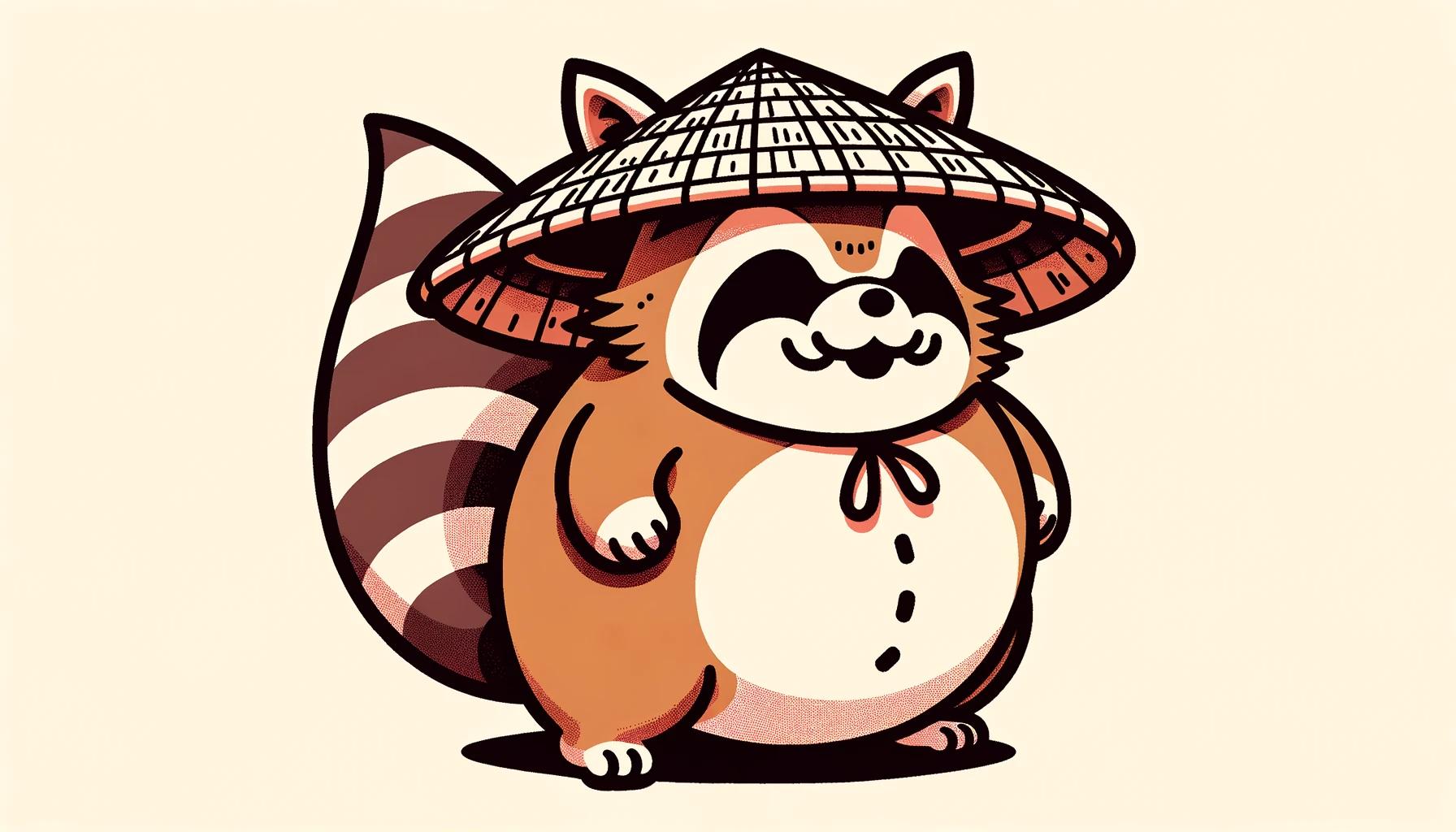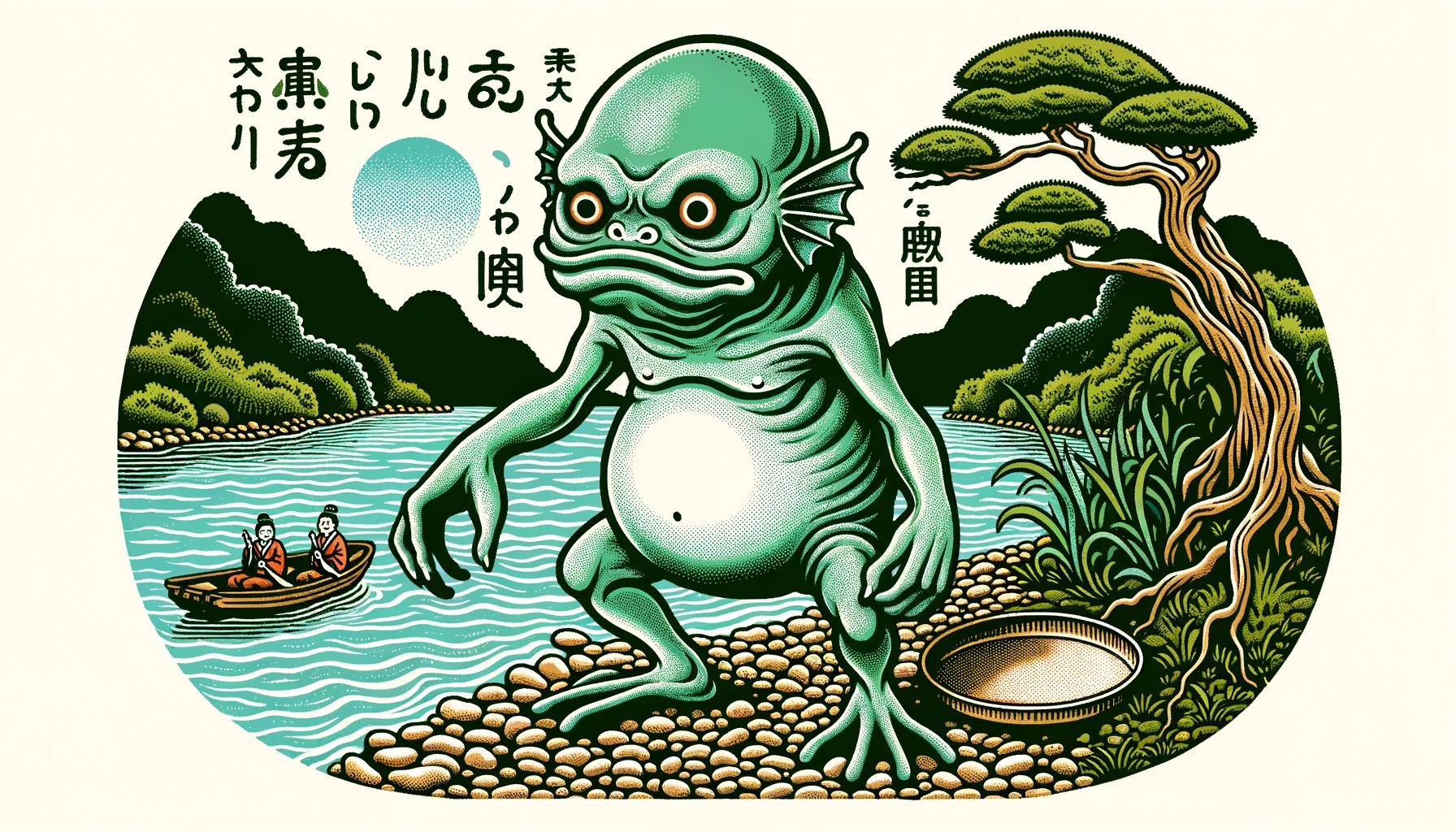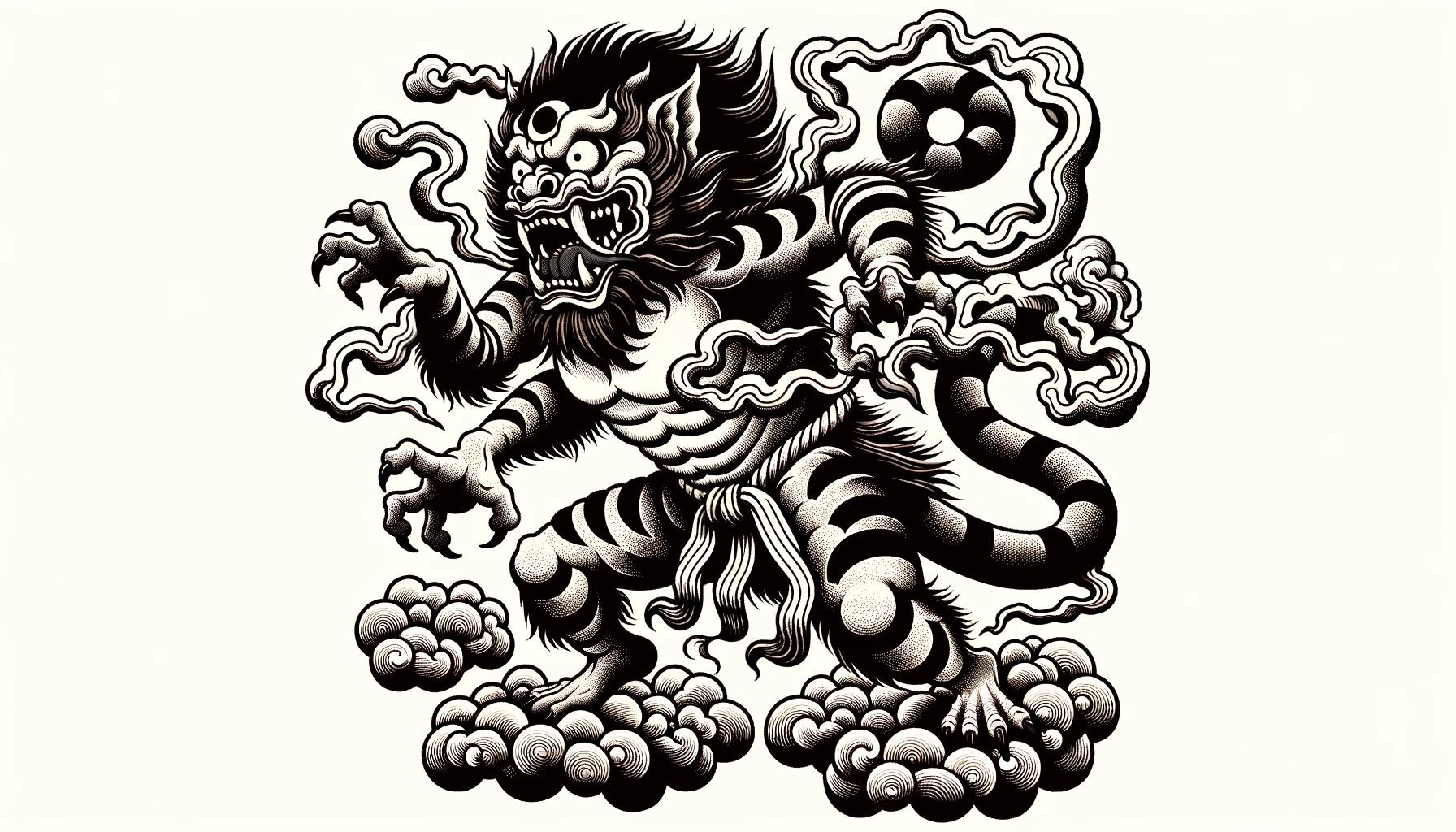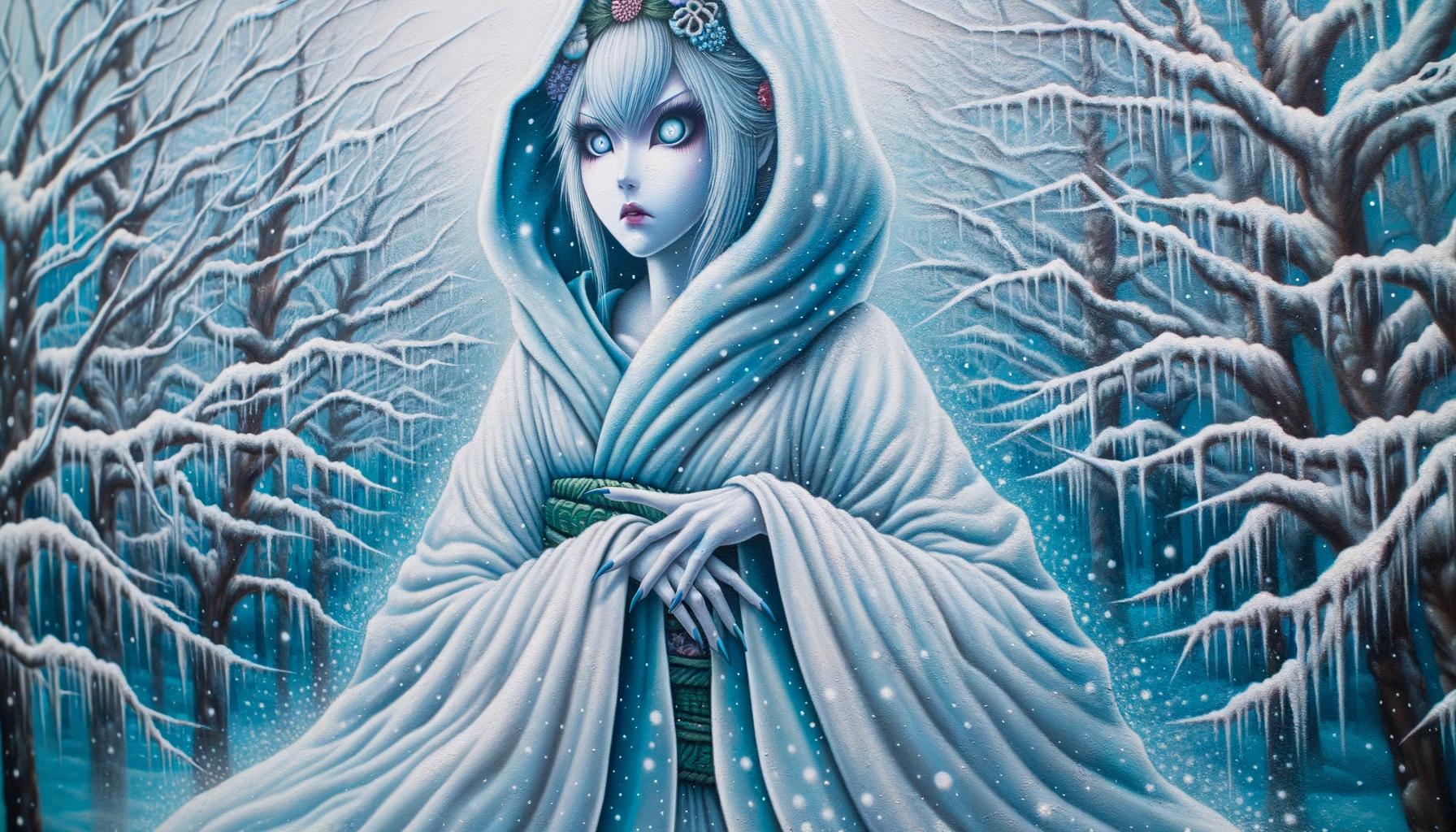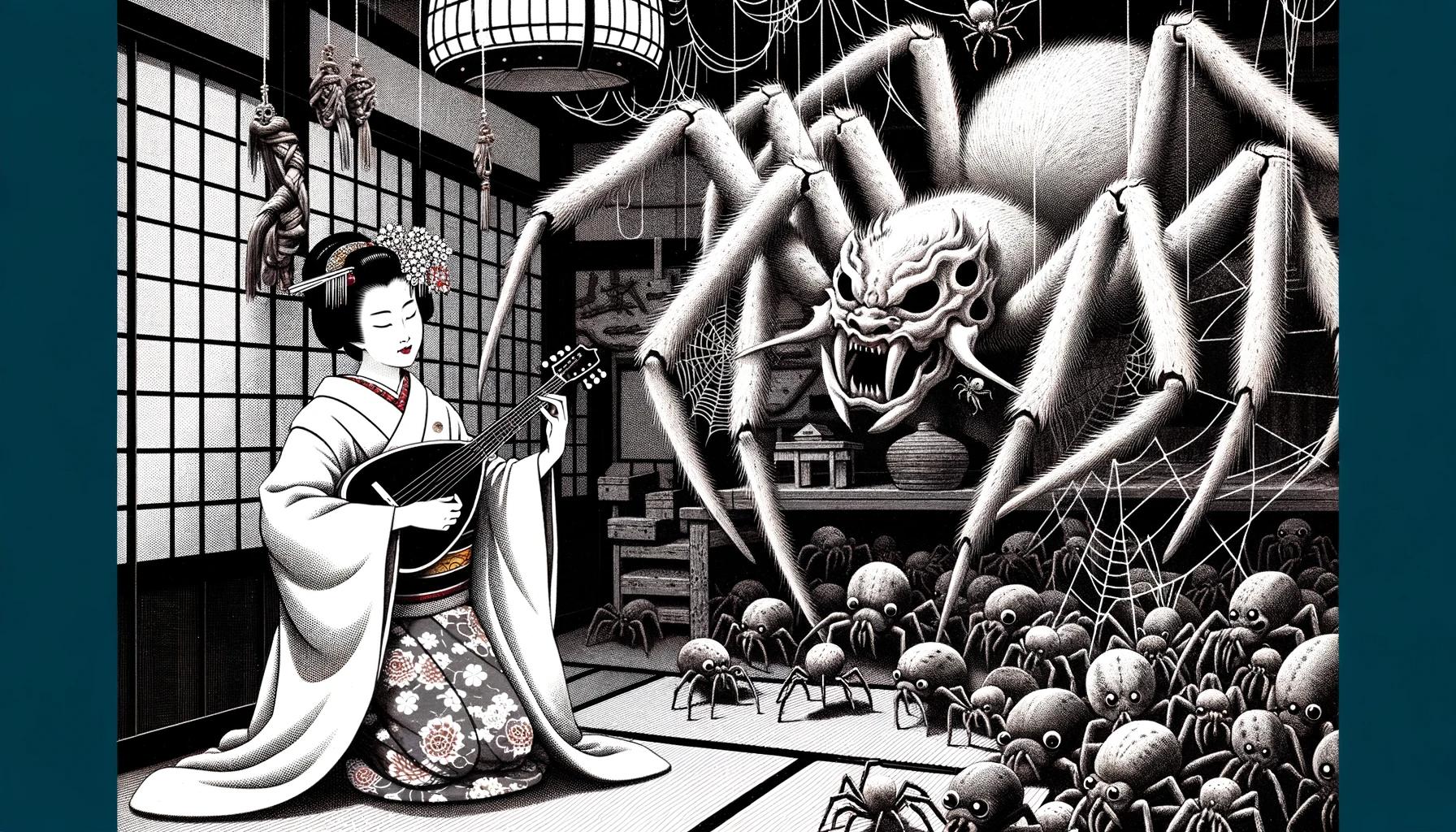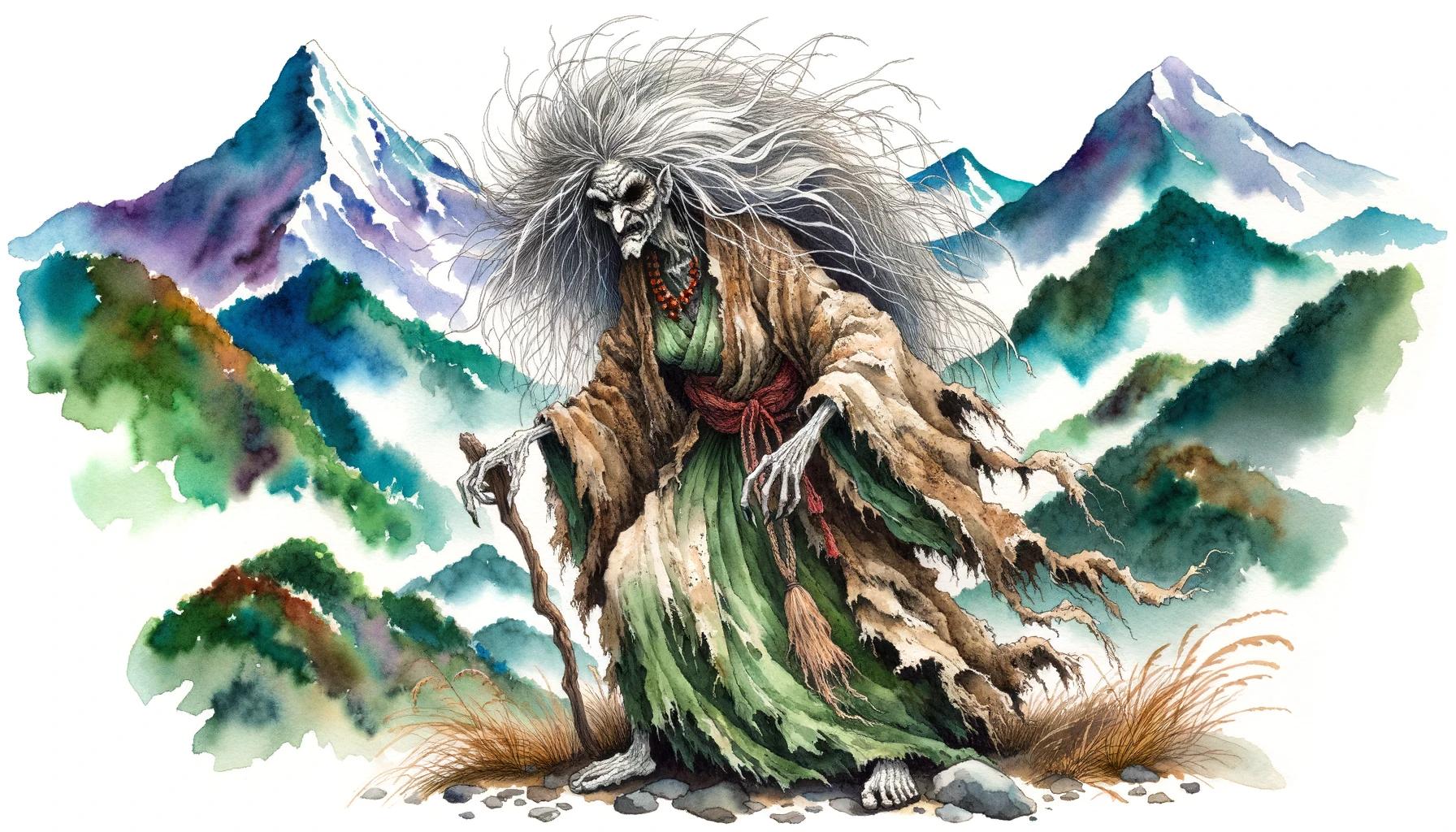How Many Gods in Japanese Mythology: A Deep Dive into the Divine Pantheon
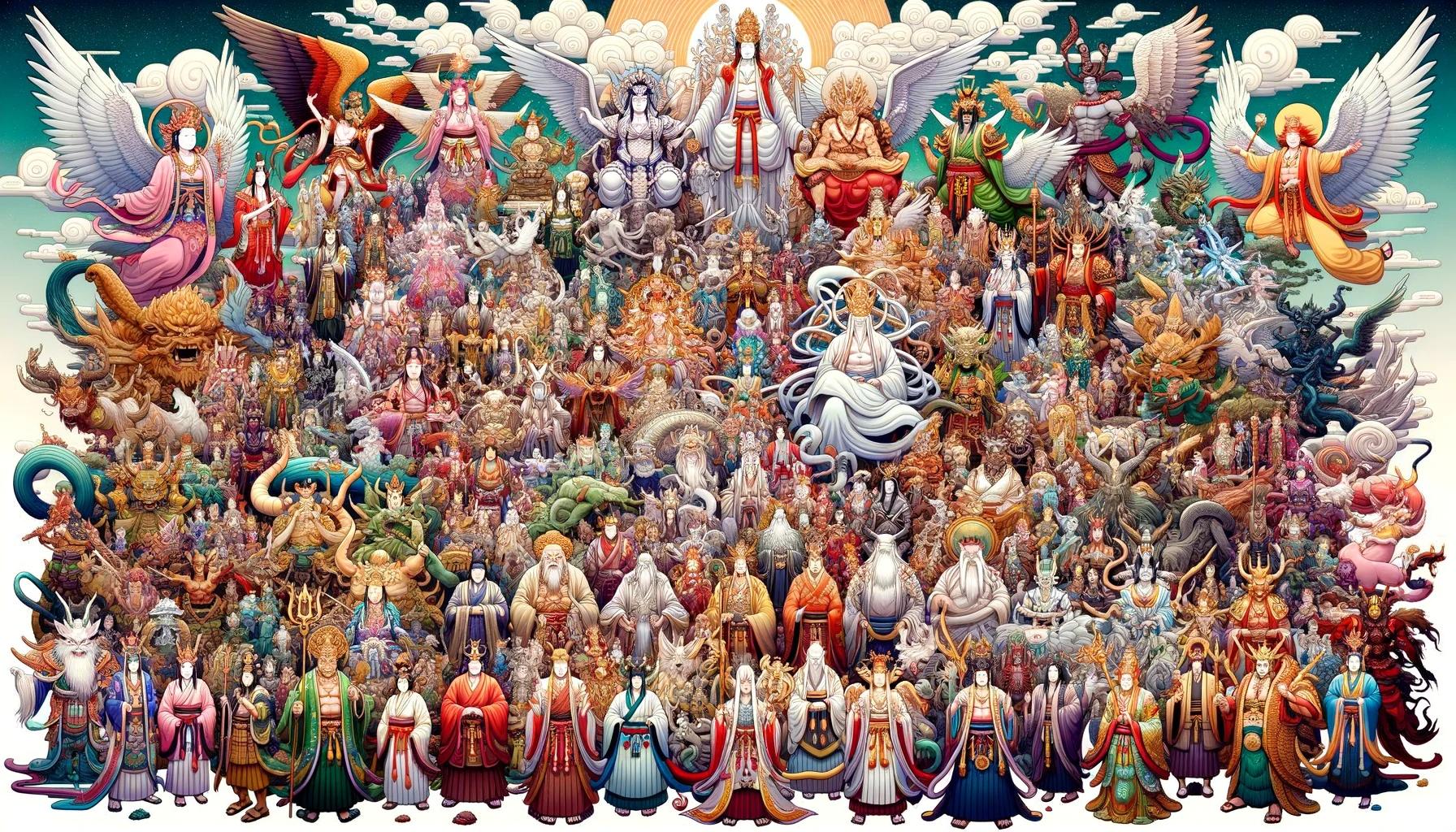
The rich and diverse Japanese mythology is filled with a multitude of gods and deities, known as kami. With an estimated 8 million gods, these divine beings encompassed various aspects of nature and natural phenomena.
From Amaterasu-Ōmikami, the revered goddess of the sun, to Susanoo-no-Mikoto, the god of storms and the sea, and the divine couple Izanagi and Izanami, who are believed to have created Japan itself, Japanese mythology is a treasure trove of fascinating deities.
Join us on a journey through the captivating world of these gods and their significance in Japanese culture.
The Concept of Kami in Japanese Mythology
In Japanese mythology, the concept of kami plays a central role. Kami can be defined as the divine spirits or deities that are worshipped and revered in the Shinto religion, which is the native religion of Japan.
The term Kami can also encompass a wide range of entities, including natural elements, ancestors, and even deceased individuals who have achieved a divine status.
These kami are believed to inhabit various elements of the natural world, such as mountains, rivers, trees, and rocks.
They are seen as the embodiment of the forces of nature and play a significant role in maintaining harmony and balance in the world.
Each kami possesses its own unique characteristics and powers, and they are revered and worshipped for their specific roles and attributes.
They are regarded as powerful beings that can influence human lives and the natural world.
- Divine Nature: Kami are considered divine beings with powers beyond human comprehension. They are often associated with creation, protection, and guidance.
- Connection to Nature: Kami are deeply rooted in the natural world, reflecting the strong bond between the Japanese people and their environment.
- Worship and Rituals: The worship of kami takes place in Shinto shrines, where rituals and ceremonies are conducted to honor and seek blessings from these divine entities.
- Individual and Collective Roles: Kami can have both individualistic roles, representing a specific aspect of nature or phenomena, as well as collective roles, symbolizing a group or lineage.
The concept of kami in Japanese mythology reflects the reverence the Japanese people hold towards nature, highlighting their deep spiritual connection with the natural world.
Understanding the significance and diverse characteristics of these kami is integral to comprehending the rich tapestry of Japanese mythology.
Amaterasu-Ōmikami: The Sun Goddess and Ancestor of Imperial Lineage
In Japanese mythology, Amaterasu-Ōmikami holds a position of utmost importance as the goddess of the sun and the revered ancestor of the imperial lineage. Believed to have played a crucial role in the creation and shaping of the world, Amaterasu-Ōmikami is highly venerated and worshipped in numerous shrines throughout Japan.
Amaterasu-Ōmikami’s association with the sun represents her role as the bringer of light, warmth, and life. According to legends, she emerged from a cavern, bringing radiance and brightness to the world.
She is often depicted with a radiant aura and adorned in regal attire, symbolizing her divine status.
As the ancestor of the imperial lineage, Amaterasu-Ōmikami is considered the progenitor of the Japanese emperor, who is believed to be directly descended from her.
This belief further solidifies her significance and influence in the culture and traditions of Japan.
Shrines dedicated to Amaterasu-Ōmikami, such as the grand Ise Grand Shrine in Mie Prefecture, are regarded as sacred sites for pilgrimage and worship.
These shrines are known for their intricate architecture and serene surroundings, offering devotees a place to connect with the divine presence embodied by the goddess.
The reverence for Amaterasu-Ōmikami resonates strongly in Japanese society, particularly during ceremonial events and festivals.
The enthronement and other important rituals of the emperor often incorporate aspects related to the goddess, emphasizing her central role in the imperial lineage and the country’s spiritual heritage.
Amaterasu-Ōmikami’s significance in Japanese mythology reflects the deep-rooted connection between the Japanese people and nature, as the sun holds immense importance in shaping the land, seasons, and agricultural cycles.
Her divine influence continues to be observed and celebrated as an integral part of Japan’s cultural identity and religious practices.
Susanoo-no-Mikoto: The God of Storms and the Sea
In Japanese mythology, Susanoo-no-Mikoto is a powerful deity known as the god of storms and the sea. He is one of the key figures in the legend of the origin of Japan.
Susanoo-no-Mikoto is often depicted as a wild and tempestuous deity, bringing thunder, rain, and chaotic winds to the world.
According to the myth, Susanoo-no-Mikoto was banished from the heavens by his sister Amaterasu, the sun goddess.
As he descended to the mortal realm, he came across a land in turmoil. There, he encountered a monstrous serpent, Yamata-no-Orochi, terrorizing the region and demanding human sacrifices. Drawing on his bravery and strength, Susanoo-no-Mikoto engaged in a fierce battle with the serpent and ultimately defeated it.
By slaying the serpent, Susanoo-no-Mikoto brought peace and prosperity to the land. He presented a sword, known as the Kusanagi-no-Tsurugi, to his sister Amaterasu as a symbol of reconciliation. This legendary sword is one of the three Imperial Regalia of Japan and represents the authority and power of the emperor.
In addition to his association with storms and the sea, Susanoo-no-Mikoto is also revered as a protector against evil spirits. He is sometimes depicted as a warrior, wielding a sword and wearing storm-cloud armor.
Today, Susanoo-no-Mikoto continues to be an important deity in Japanese mythology and is honored in Shinto ceremonies and rituals. He embodies the awe-inspiring forces of nature and serves as a reminder of the destructive and transformative power of storms and the sea.
Izanagi and Izanami: The Divine Couple and Creators of Japan
In Japanese mythology, Izanagi and Izanami are revered as a divine couple who played a fundamental role in the creation of Japan. According to ancient legends, they were instructed by the heavenly gods to create the land from the chaos that existed at the beginning of time.
Izanagi, the male deity, and Izanami, the female deity, stood on the floating bridge of heaven and used a jeweled spear to mix the primeval ocean. As they lifted the spear, drops of salty water fell down and formed the islands of Japan.
These islands eventually became the land that we know today.
The divine couple also gave birth to many other gods, known as the kami, who became associated with various aspects of nature and natural phenomena.
This lineage of gods further contributed to the rich tapestry of Japanese mythology and shaped the beliefs and rituals of the indigenous Shinto religion.
Izanagi and Izanami’s divine union also symbolizes the sacred bond between male and female, representing the importance of balance and harmony in creation and Japanese society.
Their story serves as a reminder of the interconnectedness between humans, gods, and the natural world.
- The divine couple, Izanagi and Izanami, played a vital role in the creation of Japan.
- They mixed the primeval ocean using a jeweled spear, resulting in the formation of the Japanese islands.
- They gave birth to numerous gods who became revered kami in Japanese mythology.
- Their union represents the sacred balance between male and female, reflecting the interconnectedness of humans, gods, and nature.
Hachiman: The God of War and Divine Protector of Japan
Hachiman, the esteemed god of war, holds a significant role in Japanese mythology as the divine protector of Japan.
Often depicted wearing armor and carrying a bow, he symbolizes bravery, military prowess, and victory in battle. Hachiman is widely revered in Japan and is believed to safeguard the nation and its people against external threats.
According to the legends, Hachiman emerged as a deity after Emperor Ōjin, who was revered as his incarnation, passed away. This led to the worship and adoration of Hachiman as the embodiment of imperial power and military strength.
As the god of war, Hachiman was frequently invoked by samurais and warriors, seeking his blessings and protection before heading into battle.
Throughout Japanese history, numerous shrines dedicated to Hachiman were built across the country, with major ones including Tsurugaoka Hachimangu in Kamakura and Usa Shrine in Kyushu. These shrines served as centers of worship and pilgrimage, attracting devotees from all walks of life, including military leaders, common folk, and even emperors.
Hachiman’s veneration expanded beyond his association with warfare. Over time, he came to be seen as a deity who offered protection, not only in military endeavors but also in various aspects of life, such as agriculture, commerce, and the overall well-being of the nation.
This broader perception of Hachiman elevated his status as a revered guardian and patron deity.
To this day, festivals dedicated to Hachiman are celebrated throughout Japan, such as the grand Hachiman Matsuri in Tsurugaoka Hachimangu. These festivals involve elaborate processions, performances, and rituals, showcasing the enduring significance of Hachiman and his continued role as a protective figure in Japanese society.
In conclusion, Hachiman, the god of war and divine protector of Japan, holds a prominent position in Japanese mythology. Revered for his association with bravery, military prowess, and victory, Hachiman is worshipped as the guardian deity who safeguards the nation and its people from harm.
His shrines and festivals serve as focal points for devotion, representing the enduring reverence and belief in his protective power throughout Japanese history and culture.
Inari Ōkami: The Deity of Rice and Fertility Associated with Foxes
Inari Ōkami holds a special place in Japanese mythology as the deity associated with rice and fertility.
Revered for centuries, Inari Ōkami has become one of the most prominent and beloved kami in the Shinto pantheon.
Rice has always been a vital crop in Japan, serving as a staple food for its people.
Inari Ōkami, often depicted as a benevolent figure, has long been believed to oversee the success and abundance of rice cultivation. Farmers and villagers have looked to Inari Ōkami for blessings and protection, offering prayers and tributes to ensure bountiful harvests.
However, Inari Ōkami’s influence extends beyond agriculture. The deity is also associated with fertility, symbolizing the abundance and prosperity of all aspects of life. In Japanese folklore, foxes are believed to be messengers of Inari Ōkami, serving as spiritual guardians and mediators between the divine and human realms.
The connection between Inari Ōkami and foxes has given rise to various legends and beliefs. Fox statues, known as kitsune, can often be found near Inari shrines, serving as a representation of these mystical creatures.
It is said that foxes possess the ability to shape-shift into human form, and they are often portrayed as loyal and wise companions to Inari Ōkami.
As devotees visit Inari shrines across Japan, they pay homage to the deity by leaving offerings of rice, sake, and other symbolic items.
They seek Inari Ōkami’s blessings for prosperity, good fortune, and protection.
The enduring popularity of Inari Ōkami and the reverence given to this deity reflect the deep cultural and agricultural significance of rice in Japanese society.
Inari Ōkami’s association with fertility and foxes speaks to the spiritual connection between humans, nature, and the divine.
Today, Inari Ōkami continues to be revered and celebrated in various festivals and rituals, reminding the Japanese people of their deep-rooted traditions and their gratitude for the abundant blessings bestowed upon them.
Benzaiten: The Goddess of Water, Music, and Love
In Japanese mythology, Benzaiten is a prominent goddess associated with water, music, and love. She is revered as one of the Seven Lucky Gods, known as Shichi Fukujin, who bring good fortune and blessings.
Benzaiten is believed to have the power to grant wealth, wisdom, and artistic abilities to her devotees.
As the goddess of water, Benzaiten is often depicted surrounded by flowing streams or sitting on the water’s edge.
This association with water represents her role as a deity who provides purification, abundance, and fertility. It is believed that her blessings can bring prosperity and harmony to people’s lives.
Music holds great significance in the worship of Benzaiten.
She is often portrayed holding a biwa, a traditional Japanese lute-like instrument, symbolizing her connection to the arts and creativity. It is believed that she inspires musicians, artists, and performers, and grants them talent and success in their endeavors.
Love, beauty, and romance are also aspects associated with Benzaiten. She is seen as a patron of relationships and is believed to bring harmony and happiness to couples. Many individuals seeking love and companionship offer prayers and offerings to Benzaiten, hoping to find true love or enhance their existing relationships.
Devotees often visit shrines dedicated to Benzaiten to seek her blessings and guidance. These shrines are adorned with beautiful statues and artwork depicting her serene and graceful form. Worshippers may offer prayers, light incense, or make donations as a sign of devotion.
In modern Japan, the influence of Benzaiten can be seen in various art forms, including traditional music, theater, and visual arts. Many festivals and cultural events also pay homage to her, combining music, water features, and vibrant celebrations.
Indeed, Benzaiten’s presence in Japanese mythology showcases the deep reverence for nature, creativity, and emotional connections within Japanese culture.
Raijin: The God of Thunder and Lightning
In Japanese mythology, Raijin is revered as the god of thunder and lightning. He is depicted as a fearsome deity, often shown with a fierce expression and muscular physique, wielding drumsticks in his hands.
Raijin’s primary role is to control and unleash the forces of thunder and lightning, which were seen as powerful natural phenomena.
According to legend, Raijin was born when Izanami, the goddess of creation, gave birth to him and his brother Fujin, the god of wind.
Together, Raijin and Fujin are the elemental forces responsible for the natural elements of thunder, lightning, and wind. Raijin is believed to strike his drums to create thunder, while lightning is said to be the product of his flashing eyes.
Raijin’s portrayal as a god of thunder and lightning reflects the reverence and fear that the Japanese had for these powerful forces of nature. Thunderstorms were seen as both awe-inspiring and potentially destructive, and Raijin embodied this duality within Japanese mythology.
In Japanese culture, Raijin’s imagery is often found in various forms of art, from traditional paintings to modern-day manga and anime. His presence is particularly prevalent during summer when thunderstorms are more frequent in Japan.
During these times, people would seek Raijin’s protection and offer prayers for safety from lightning strikes.
The deity Raijin continues to be an important symbol in Japanese folklore and represents the uncontrollable power of thunder and lightning.
His presence serves as a reminder of the awe-inspiring and unpredictable forces of nature that humans have long sought to understand and respect.
Fūjin: The God of Wind
Fūjin, known as the God of Wind in Japanese mythology, holds a significant role in shaping the natural world and is revered for his power and influence. Represented as a fearsome deity, Fūjin is often depicted with a bag or sack containing winds that he releases to create the gusts and breezes that blow across the land.
Considered both a destructive and life-giving force, Fūjin’s presence is felt in the howling winds of storms, the gentle rustling of leaves, and the cool breezes that bring relief on hot summer days.
His wind is capable of clearing the skies or stirring up chaotic tempests, reflecting the unpredictable and ever-changing nature of the wind itself.
Fūjin is often depicted with a disheveled appearance, symbolizing the wild and untamed nature of the wind.
He is portrayed with a fierce expression, reflecting the power and intensity of his domain. Many shrines across Japan pay homage to Fūjin, recognizing the crucial role he plays in the balance of nature.
Legends and tales often associate Fūjin with other gods and deities, showcasing his harmonious relationship with his divine counterparts. For example, Fūjin is often depicted alongside Raijin, the God of Thunder, as the two work in tandem to unleash storms upon the land.
This partnership highlights the interconnectedness of natural forces and the reverence given to these deities in Japanese mythology.
Other Significant Deities in Japanese Mythology
Japanese mythology is brimming with a diverse array of gods and goddesses beyond the well-known figures. Let’s explore two notable deities within this mythological realm:
Ryūjin: The Dragon God of the Sea
Ryūjin, often depicted as a powerful dragon, holds dominion over the sea in Japanese mythology.
This awe-inspiring deity is revered for his control over oceanic elements, protecting sailors and fishermen from harm. Ryūjin also represents wealth and prosperity, with legends that tell of his ability to transform into treasure.
The Seven Lucky Gods
The Seven Lucky Gods, known as Shichifukujin, are a group of deities who bring good fortune and happiness. Each god represents a different aspect of blessings, such as longevity, wealth, wisdom, and joy.
The group includes figures like Ebisu, the god of fishermen and merchants, and Daikokuten, the deity of wealth and prosperity.
Together, Ryūjin and the Seven Lucky Gods exemplify the rich tapestry of deities present in Japanese mythology, each with their own stories and significance in the cultural fabric of Japan.
Shinto and Its Role in Japanese Mythology
Shinto plays a pivotal role in Japanese mythology, serving as a foundation for the worship and reverence of the kami. It is a native religion of Japan, deeply rooted in the belief of the divine presence in nature and the forces of the universe.
Shinto revolves around the concept of purity, harmony, and the connection between humans and the kami.
Shinto Shrines: Sacred Places of Worship
Shinto shrines, known as jinja, are sacred spaces where the practice of Shinto takes place. These shrines serve as centers of worship and are dedicated to specific kami or groups of kami.
Each shrine typically consists of several structures, including the main sanctuary where the kami is enshrined. Visitors to these shrines can engage in various rituals, such as purification rites, prayers, and offerings, to seek blessings and guidance from the kami.
Shinto Rituals and Festivals
Shinto rituals and festivals, known as matsuri, are a vibrant part of Japanese cultural traditions. These events are held to express gratitude, seek blessings, and celebrate the presence of the kami.
Matsuri often involve processions, music, dance, and performances, creating an energetic and lively atmosphere. They are marked by participants wearing traditional attire, carrying portable shrines, and offering prayers and offerings at the shrines.
Matsuri provide an opportunity for the community to come together, fostering a sense of unity and strengthening the cultural and spiritual ties with the kami.
Comparisons and Connections with Buddhist Kami
In Japanese mythology, the concept of kami in Shintoism bears similarities and connections to Buddhist deities.
While Shinto focuses on the reverence of nature and ancestral spirits, Buddhism introduces a pantheon of divinities associated with enlightenment and liberation.
Although Shinto and Buddhism are distinct religions, they have coexisted in Japan for centuries and influenced each other’s practices and beliefs.
The interaction between Shinto kami and Buddhist kami has resulted in unique syncretic traditions and shared reverence for certain deities.
One significant connection between Shinto kami and Buddhist kami is the presence of bodhisattvas in both traditions.
Bodhisattvas are enlightened beings who have chosen to delay their own enlightenment in order to help others attain liberation. In Shinto, bodhisattvas are often worshiped as kami, blurring the line between the two religious systems.
- Kannon, known as Guanyin in Chinese Buddhism, is a compassionate bodhisattva revered in both Shinto and Buddhism. Kannon is associated with mercy, healing, and protection, and is often depicted with multiple arms and eyes to symbolize her ability to see and aid those in need.
- Jizō, or Kṣitigarbha in Sanskrit, is another bodhisattva respected in both Shinto and Buddhism.
Jizō is known as the guardian of children and travelers, as well as the protector of souls in the afterlife.
Furthermore, Shinto shrines often coexist with Buddhist temples in Japan, creating a spiritual landscape that seamlessly blends the two religious traditions.
It is not uncommon to find Shinto kami enshrined within Buddhist temple precincts, or to witness Shinto and Buddhist ceremonies taking place side by side.
These connections between Shinto kami and Buddhist kami highlight the syncretic nature of Japanese religious practices and the ability of different belief systems to coexist and influence one another.
Such interactions have enriched the mythology and spirituality of Japan, reflecting the country’s cultural diversity and openness to various religious ideas.
Influence of Japanese Mythology in Arts and Literature
Japanese mythology has had a significant impact on various forms of artistic expression and literature throughout history. Its captivating tales and divine characters have inspired countless artists, writers, and creators, both within Japan and beyond its borders.
Artists have been drawn to the vivid imagery and symbolism found in Japanese mythology. The gods and goddesses, with their distinct attributes and personalities, have been depicted in various art forms, such as traditional paintings, sculptures, and even modern multimedia installations.
These representations not only showcase the artistic skill of the creators but also serve as visual narratives, capturing the essence of the mythological stories and their cultural significance.
Literature has also been greatly influenced by Japanese mythology.
Many renowned authors have incorporated elements of these ancient tales into their works. From epic novels to poetry and short stories, these literary creations often explore themes of divinity, nature, and the interconnectedness of humans and gods.
Through their writings, authors have successfully preserved and passed down the rich mythological heritage to future generations, ensuring its enduring presence in contemporary literature.
- Symbolism: Japanese mythology’s symbolically rich narratives have inspired countless artists, allowing them to imbue their works with deeper meaning and layers of interpretation.
- Inspiration: Writers and poets have drawn inspiration from the mythological characters and their stories, using them as allegories to convey profound human emotions and experiences.
- Cultural Identity: Japanese mythology plays a crucial role in shaping and expressing the cultural identity of Japan through its artistic and literary traditions.
- Continuity: By incorporating mythological themes into contemporary works, artists and authors help ensure the continuity of these ancient tales and the preservation of their cultural significance.
It is through the arts and literature that Japanese mythology finds a dynamic medium for its continued exploration and reinterpretation.
As artists and writers continue to delve into the rich tapestry of myths, they contribute to the ongoing evolution and relevance of these ancient stories, keeping them alive and meaningful in the modern world.
The Continuing Relevance of Japanese Mythology in Modern Japan
Japanese mythology continues to have a significant impact and relevance in modern Japan, influencing various aspects of society, culture, and the arts.
One area where the influence of Japanese mythology is evident is in popular culture, including movies, anime, manga, and video games.
Many of these forms of entertainment draw inspiration from the rich tapestry of gods and stories found in Japanese mythology. From the iconic character designs to the epic narratives, these creations often incorporate elements of the divine beings and their supernatural abilities, captivating audiences both in Japan and around the world.
Additionally, Japanese mythology plays a crucial role in traditional Japanese festivals and rituals. These cultural events often feature performances and displays that celebrate and reenact mythical tales. For example, during the annual Setsubun festival, the tradition of mamemaki, or bean-throwing, originated from the belief that it wards off evil spirits, as depicted in the story of Susanoo-no-Mikoto and the Yamata no Orochi.
Furthermore, Japanese mythology remains significant in the spiritual practices of Shintoism. Shinto, the native religion of Japan, reveres the kami and recognizes their divine presence in the natural world. Many Japanese people visit Shinto shrines to pay their respects to specific deities or seek guidance and blessings for various aspects of their lives.
The continued participation in these religious traditions demonstrates the enduring relevance and belief in the power of these mythological figures.
Japanese literature and art also continue to draw inspiration from the rich mythological heritage of the country.
Classic works such as “The Tale of Genji” and “The Pillow Book” incorporate elements of Japanese mythology, exploring themes of love, destiny, and the interconnectedness of humans and gods. Similarly, traditional art forms like painting, sculpture, and calligraphy often feature depictions of mythological figures, showcasing their ongoing influence on artistic expression.
In conclusion, Japanese mythology maintains its importance and relevance in modern Japan, permeating various aspects of the nation’s culture, entertainment, spirituality, and artistic expressions. The timeless tales and intriguing characters from Japanese mythology continue to captivate and inspire, bridging the gap between the ancient past and the present day.
.












